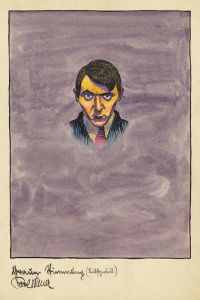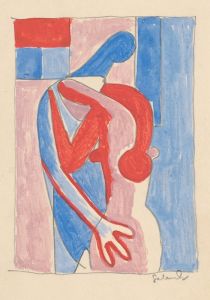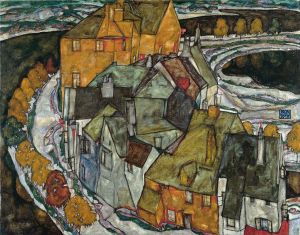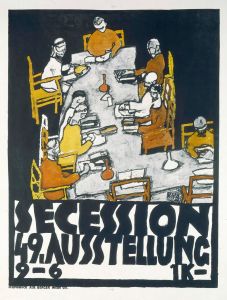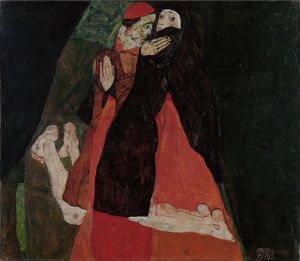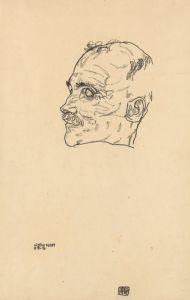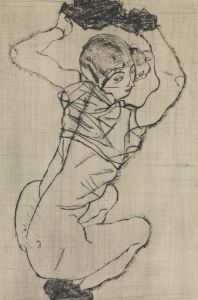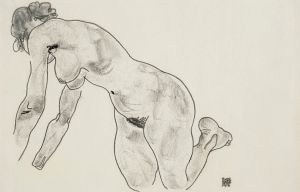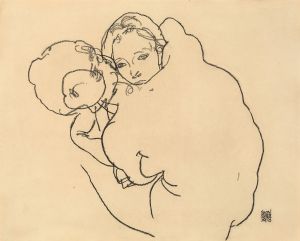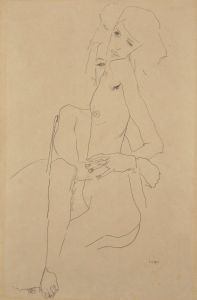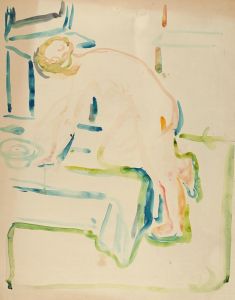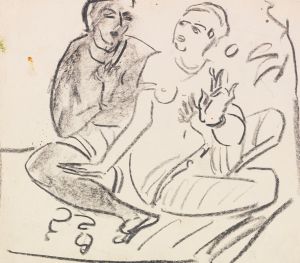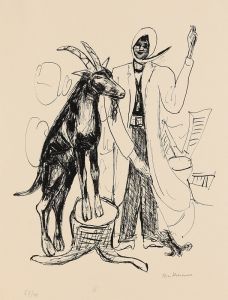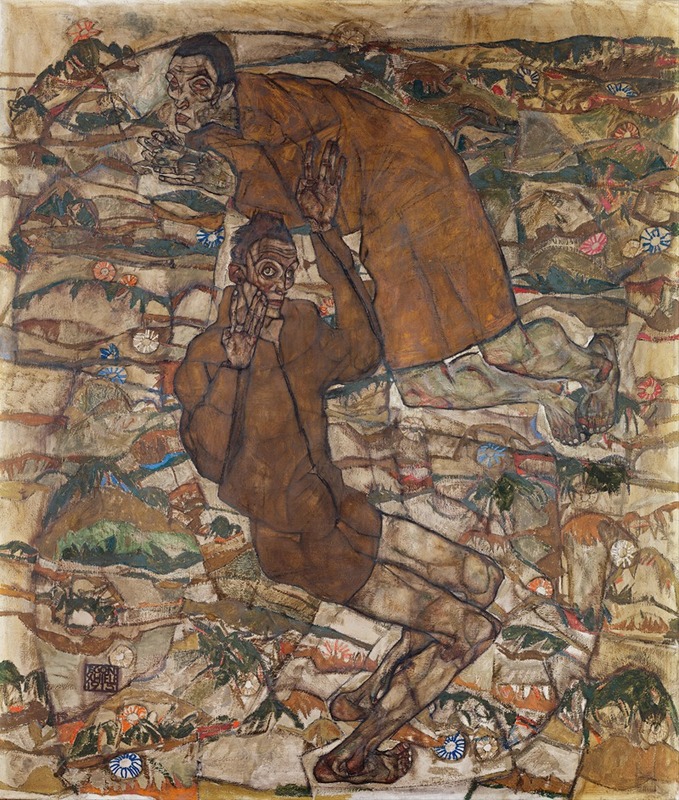
Levitation
A hand-painted replica of Egon Schiele’s masterpiece Levitation, meticulously crafted by professional artists to capture the true essence of the original. Each piece is created with museum-quality canvas and rare mineral pigments, carefully painted by experienced artists with delicate brushstrokes and rich, layered colors to perfectly recreate the texture of the original artwork. Unlike machine-printed reproductions, this hand-painted version brings the painting to life, infused with the artist’s emotions and skill in every stroke. Whether for personal collection or home decoration, it instantly elevates the artistic atmosphere of any space.
Egon Schiele's "Levitation" is a notable work within the oeuvre of the Austrian painter, who is renowned for his distinctive style and contribution to early 20th-century art. Schiele, a protégé of Gustav Klimt, is often associated with the Expressionist movement, known for its focus on conveying emotional experience rather than physical reality.
"Levitation" was created during a period when Schiele was exploring themes of existential angst, sexuality, and the human condition, which are prevalent throughout his body of work. Schiele's art is characterized by its raw intensity, bold lines, and often provocative subject matter, which challenged the norms of his time and pushed the boundaries of traditional art forms.
The painting "Levitation" exemplifies Schiele's unique approach to composition and form. His figures are typically elongated and distorted, reflecting a departure from classical representations of the human body. This distortion is not merely an aesthetic choice but serves to express deeper psychological and emotional states. Schiele's use of color is also significant, often employing a muted palette that enhances the somber and introspective nature of his work.
Schiele's career was relatively short, as he died at the young age of 28 in 1918, but his impact on the art world was profound. His works, including "Levitation," are often seen as a reflection of the turbulent times in which he lived, marked by the upheaval of World War I and the shifting cultural landscapes of early 20th-century Europe.
"Levitation" is part of Schiele's exploration of the human form and psyche, capturing the tension between physical presence and spiritual transcendence. This theme is recurrent in Schiele's work, where figures often appear suspended or in states of transformation, suggesting a departure from the earthly realm.
Egon Schiele's contribution to art is widely recognized today, with his works held in major collections and museums around the world. His influence can be seen in the development of modern art, particularly in how artists approach the depiction of the human figure and the exploration of psychological depth.
While specific details about the painting "Levitation" such as its current location or provenance might not be widely documented, the work remains an important part of Schiele's legacy. It continues to be studied and appreciated for its innovative approach and the insight it provides into the artist's vision and the broader context of Expressionist art.
In summary, "Levitation" by Egon Schiele is a testament to the artist's skill in capturing the complexities of human emotion and form. It reflects the broader themes of his work and the era in which he lived, making it a significant piece in the study of early 20th-century art.





